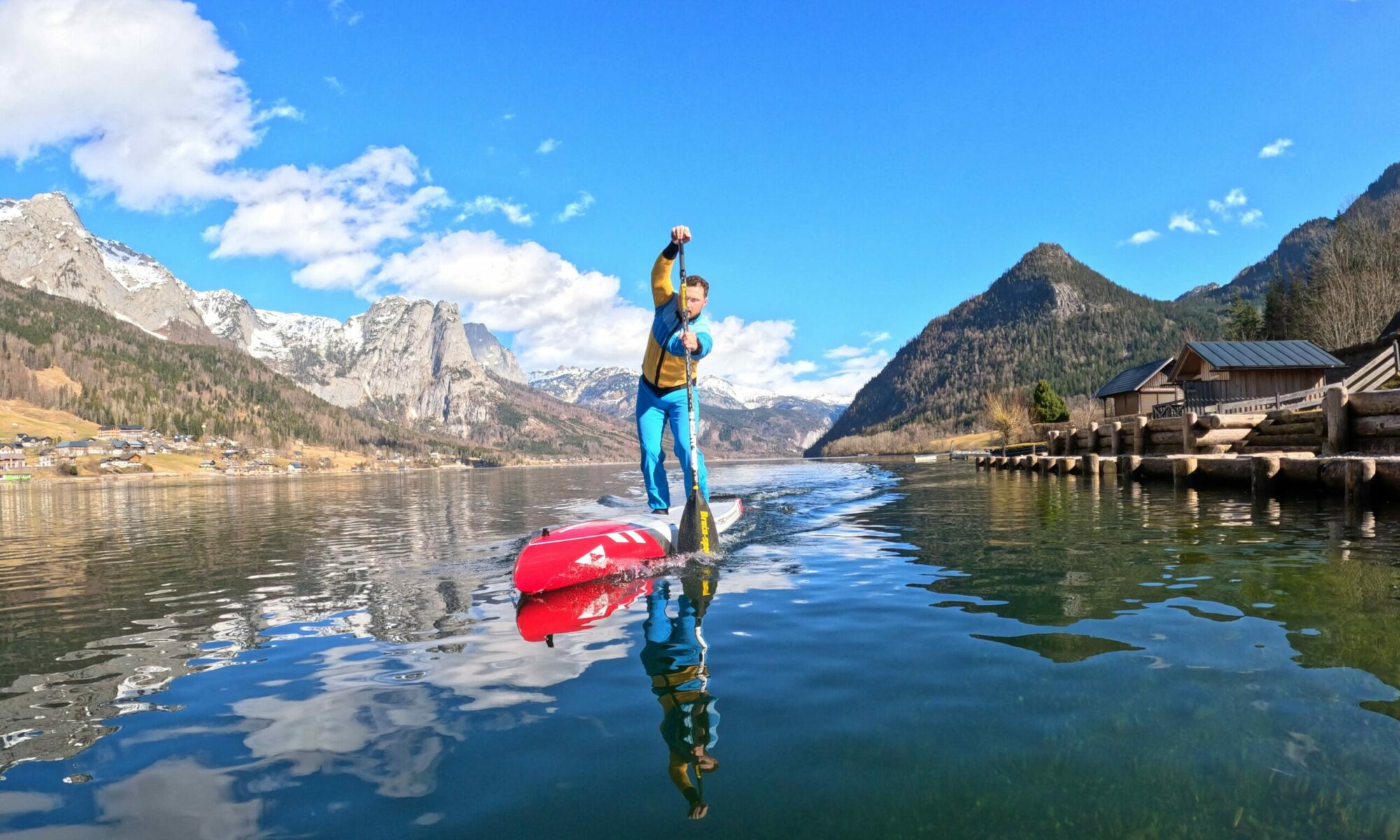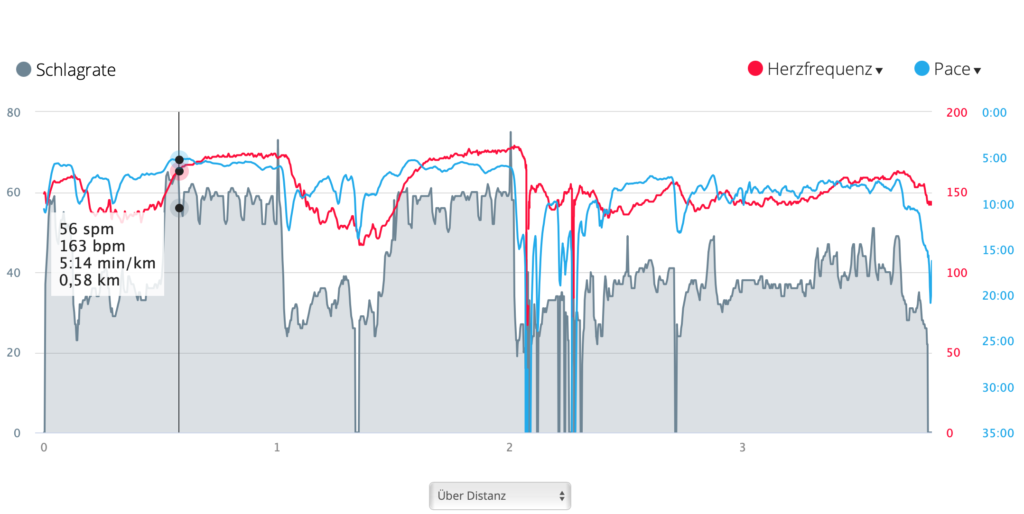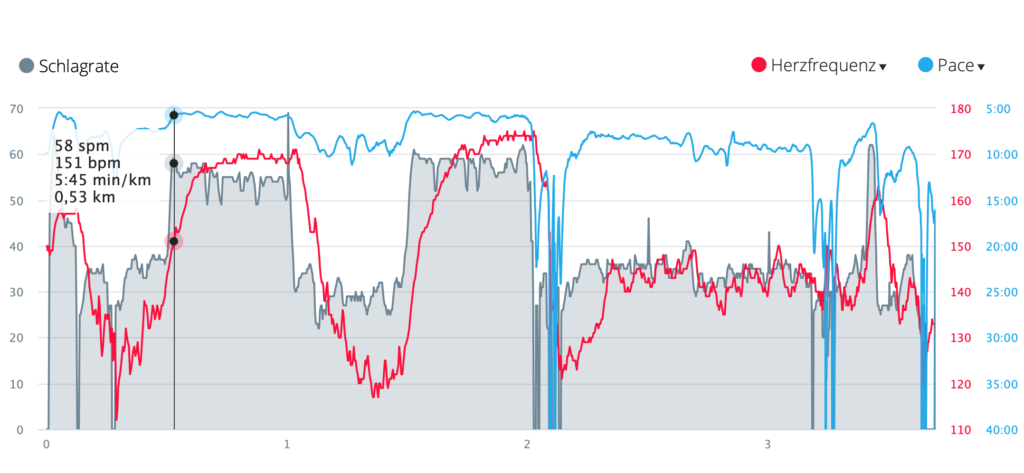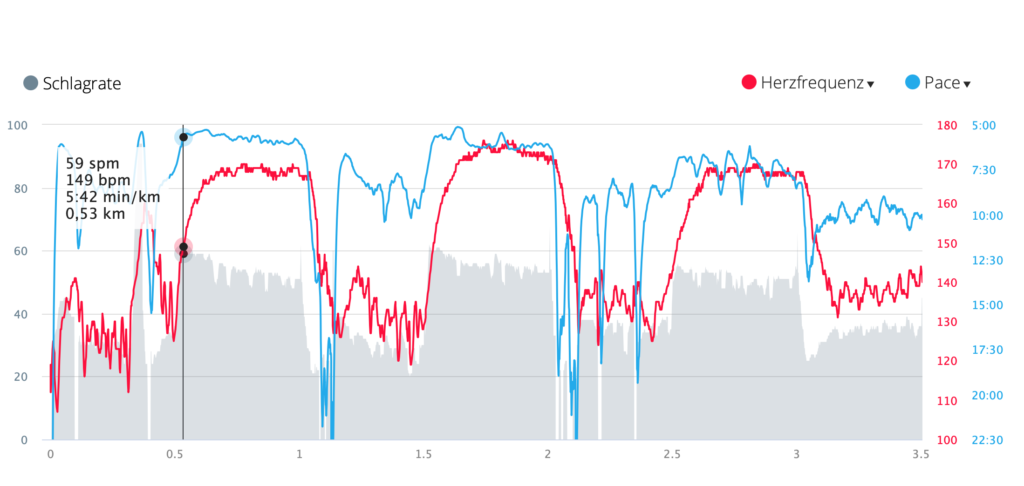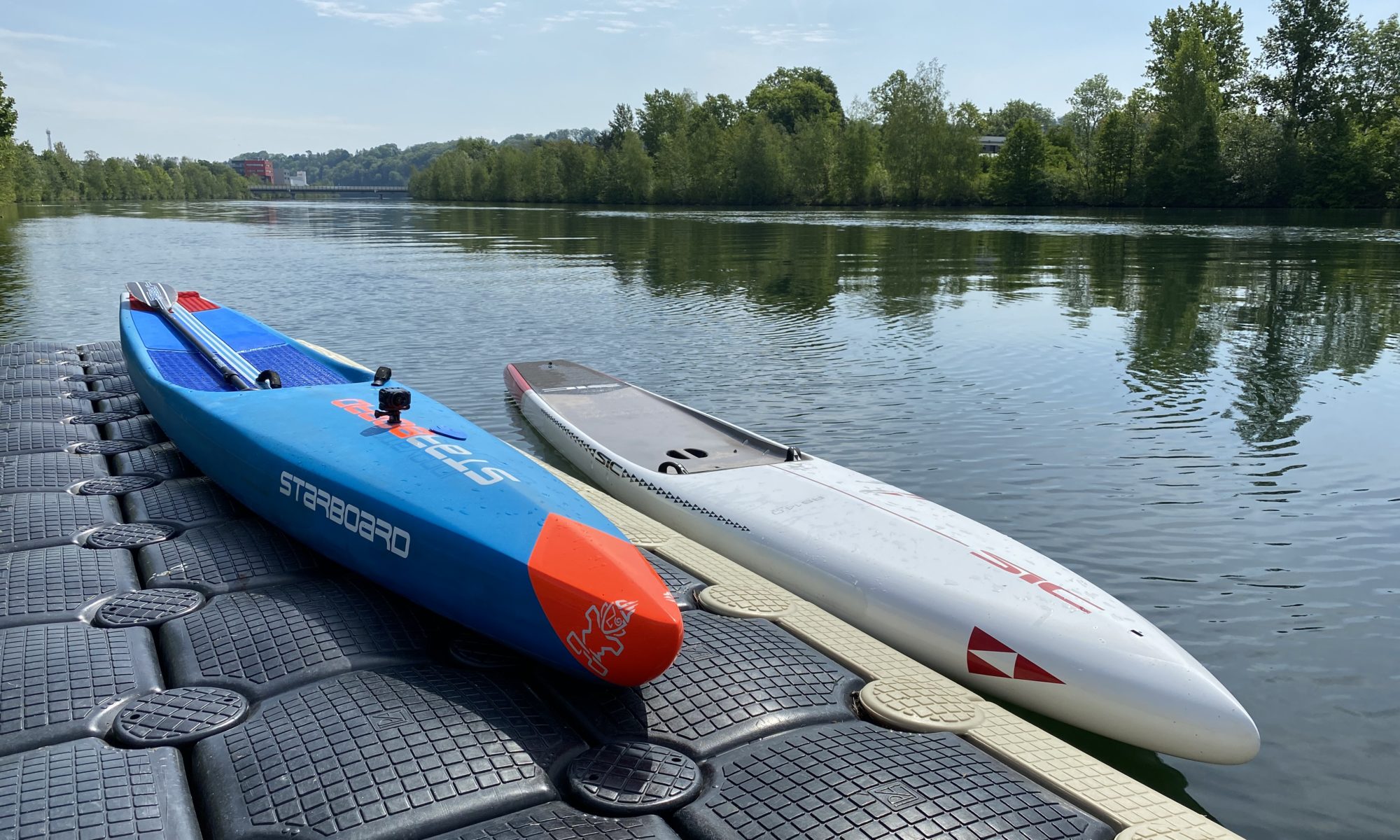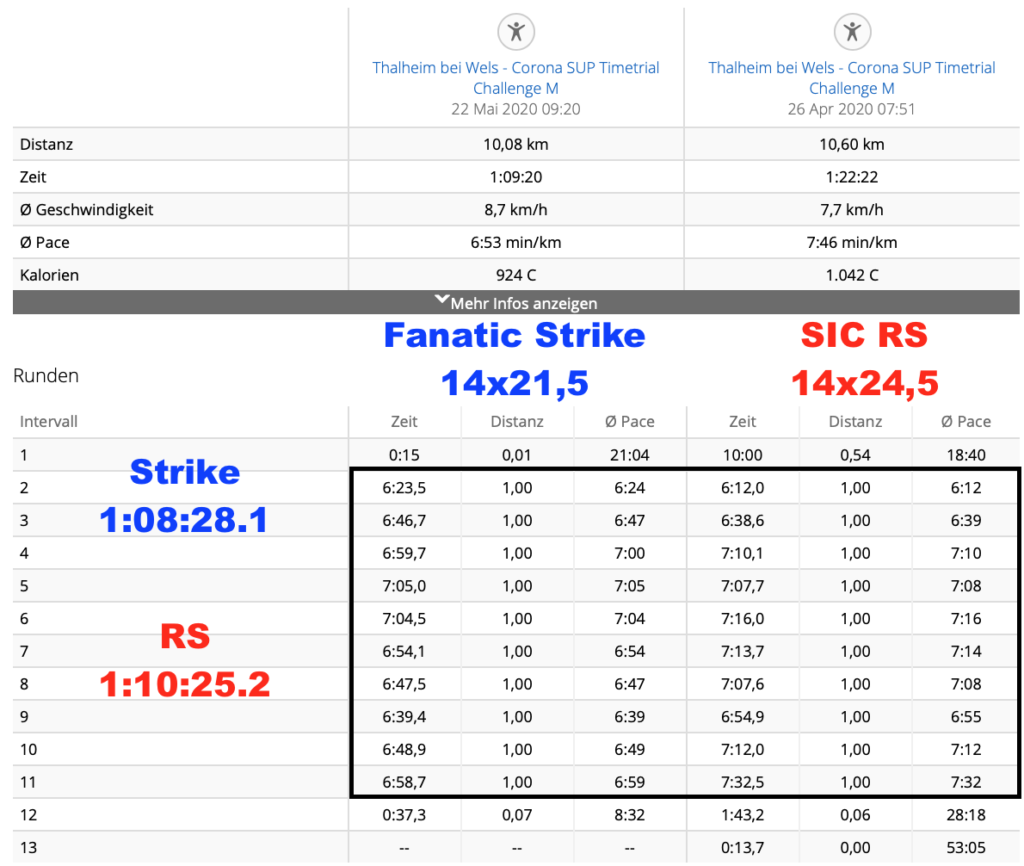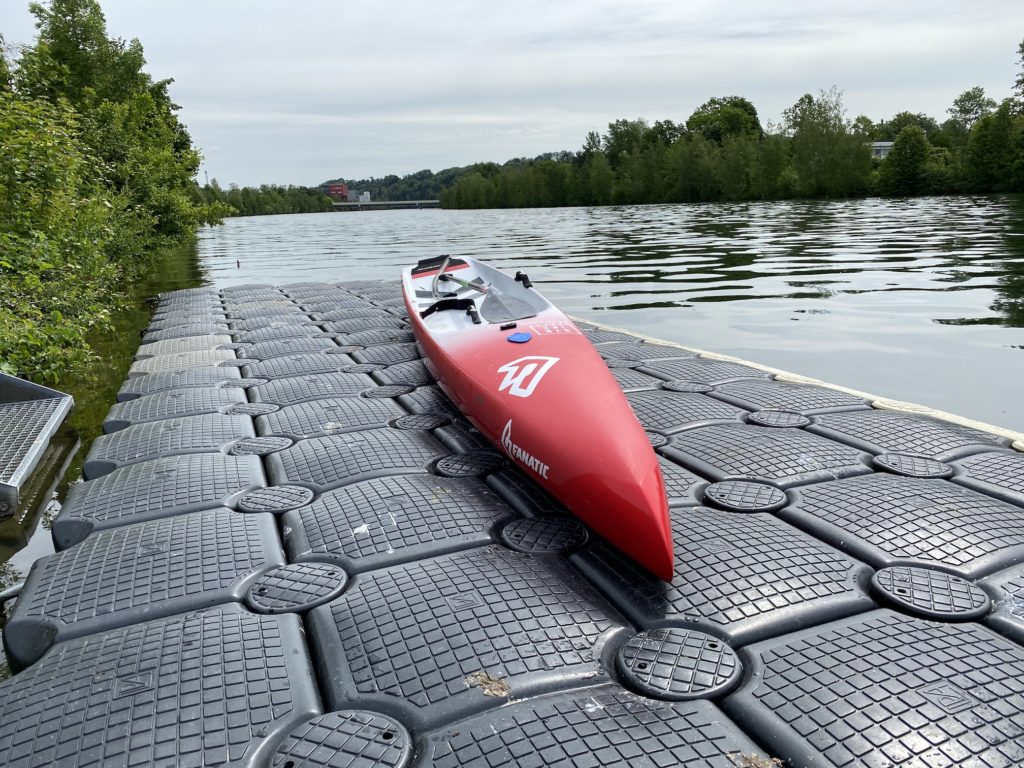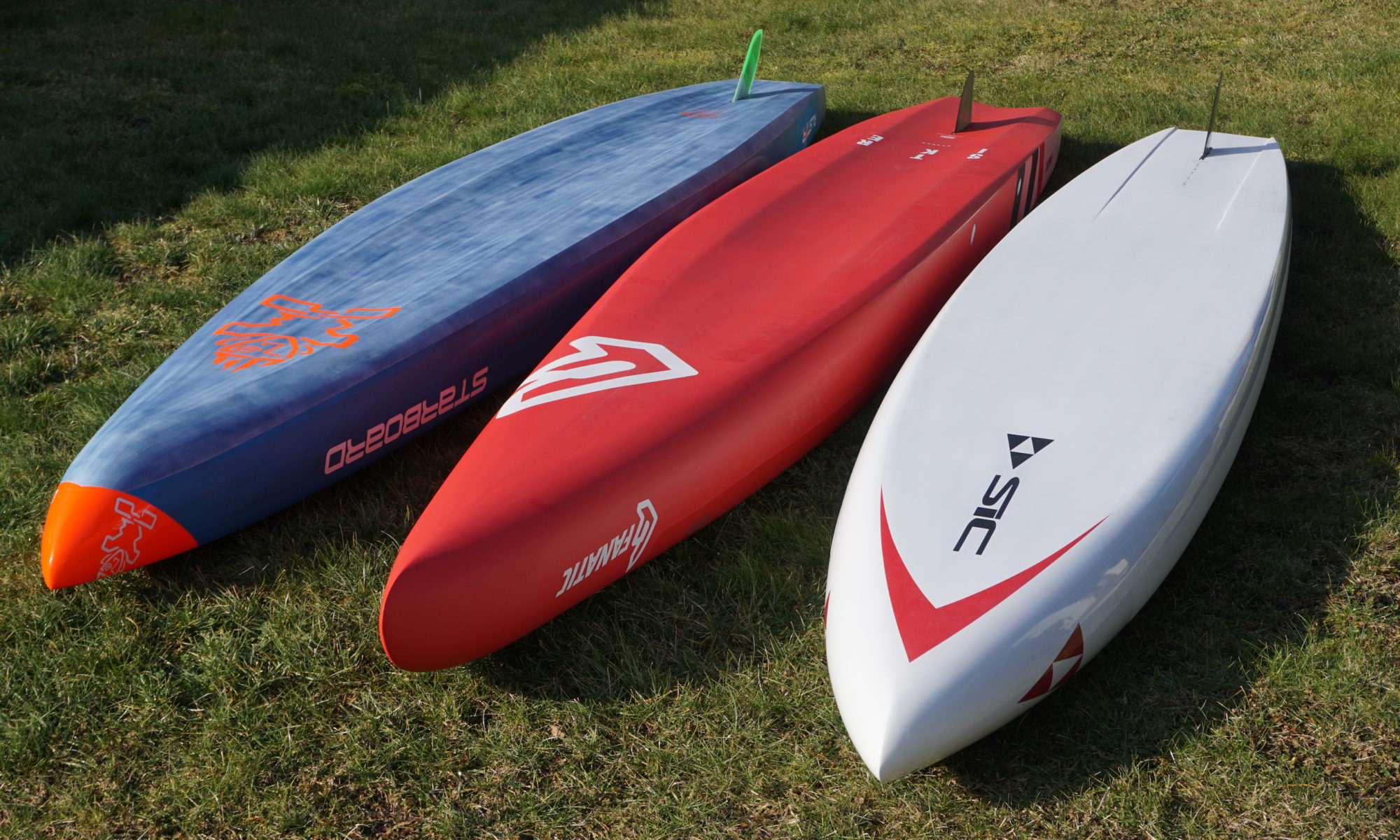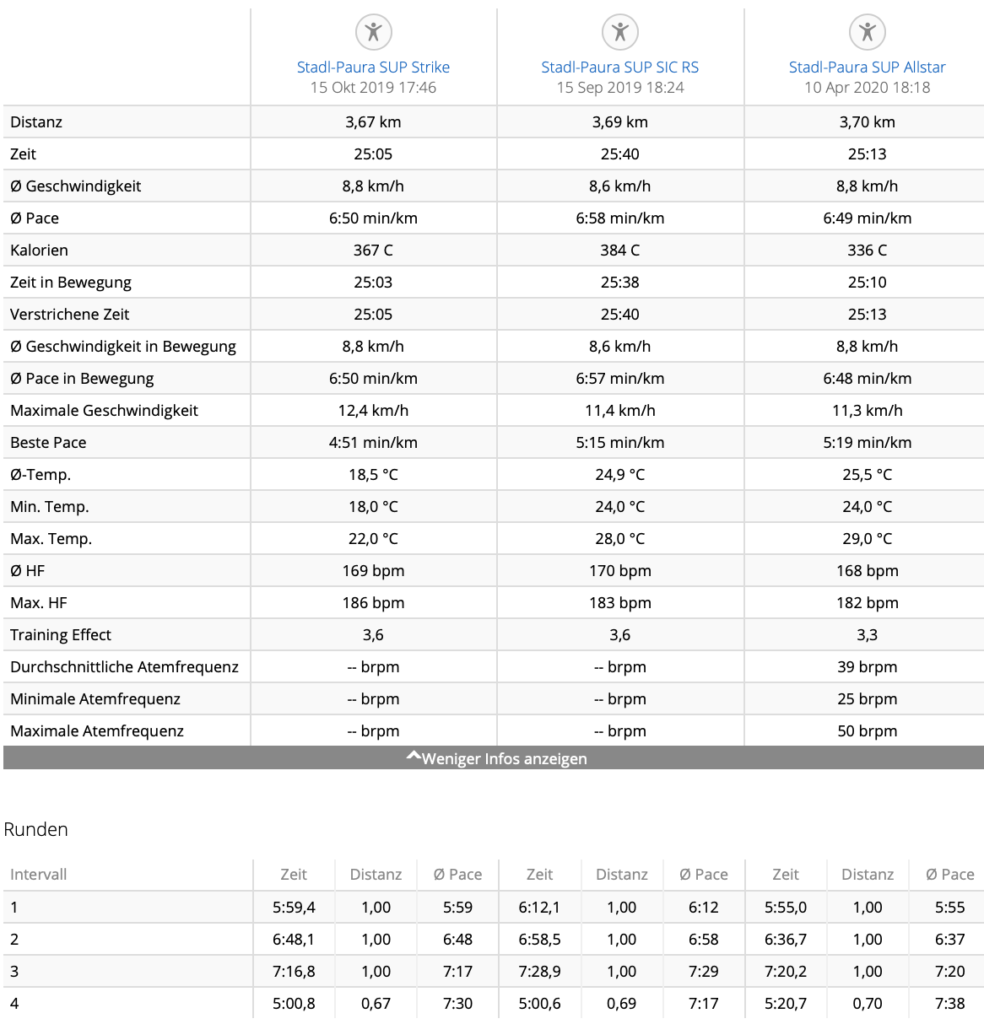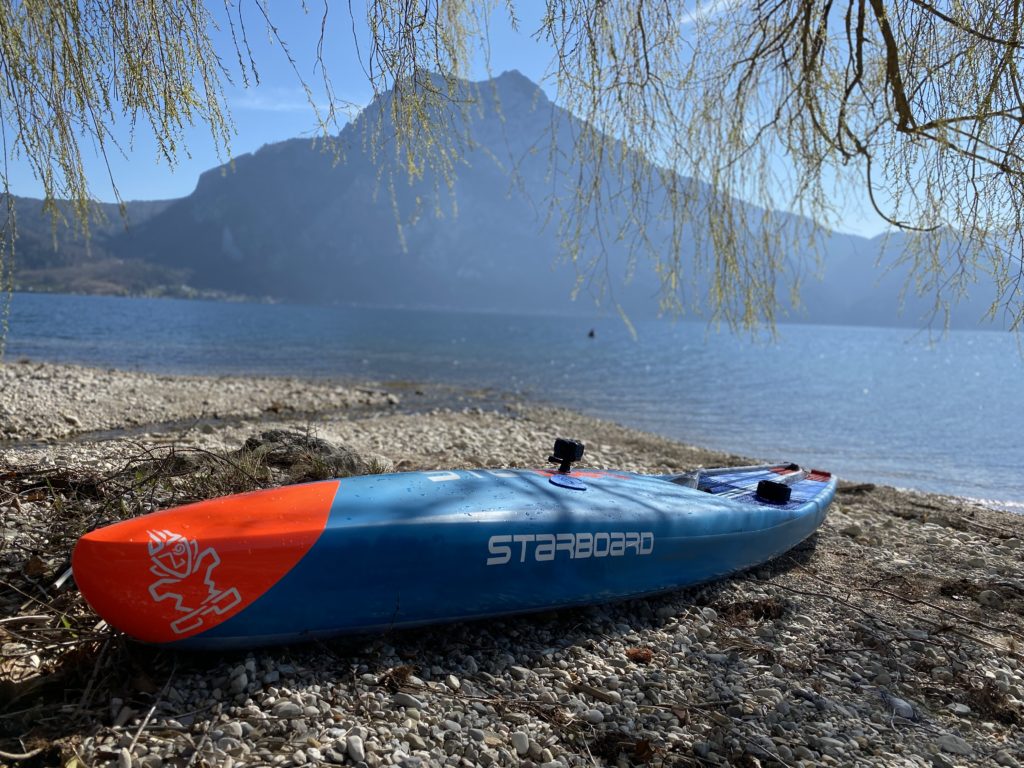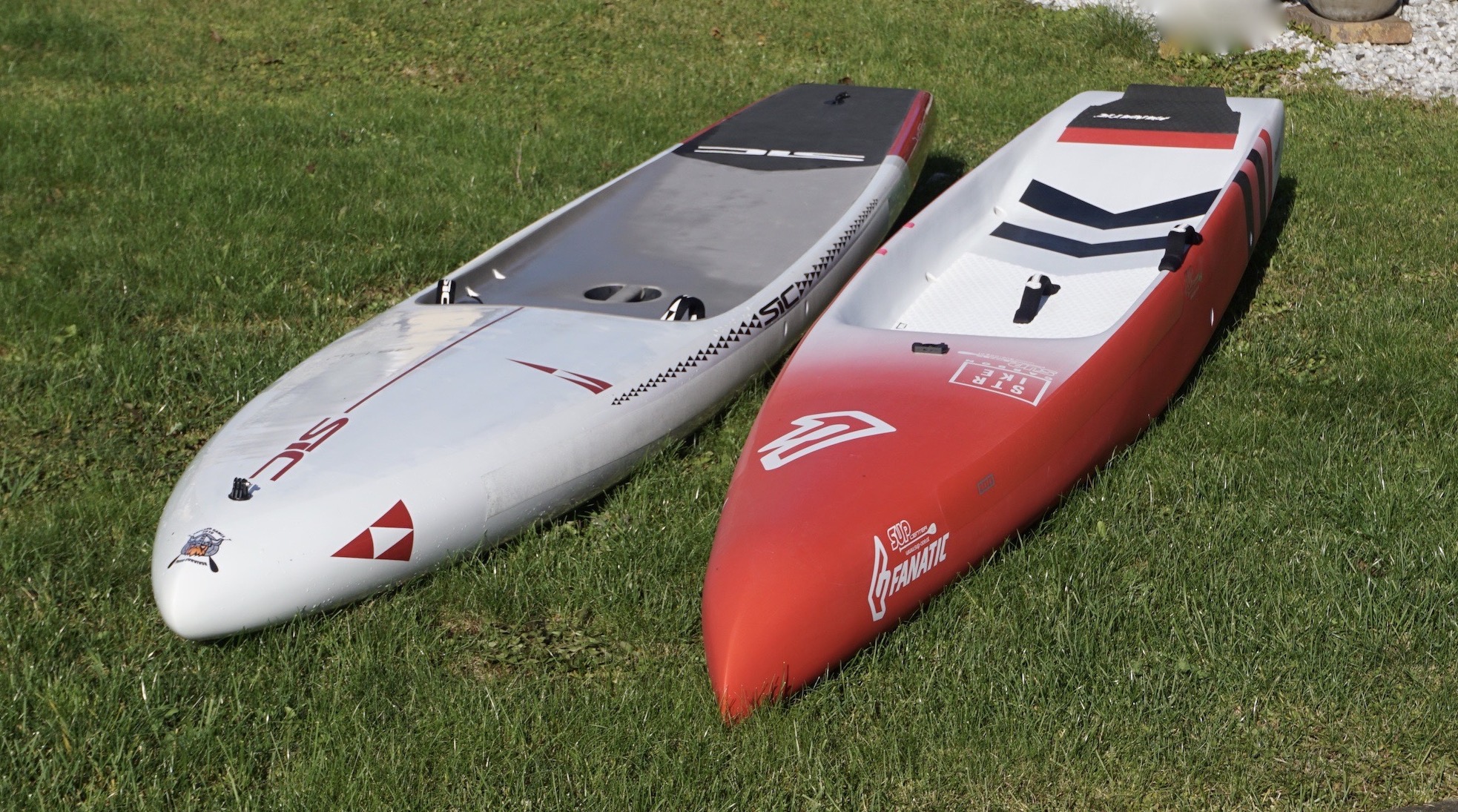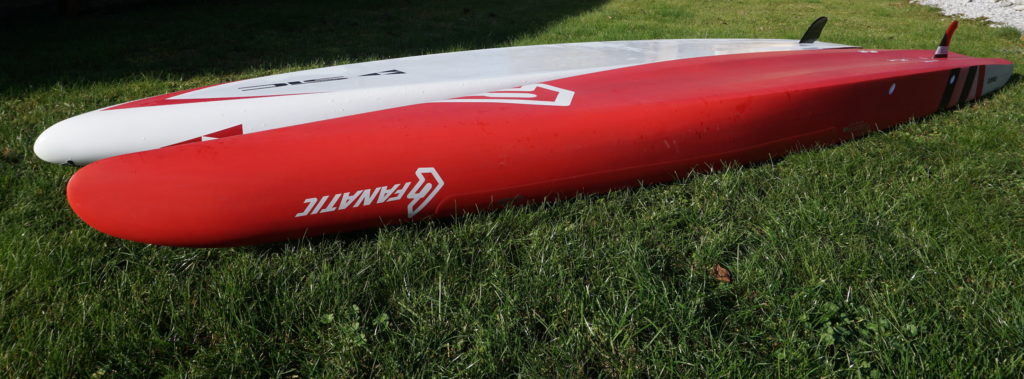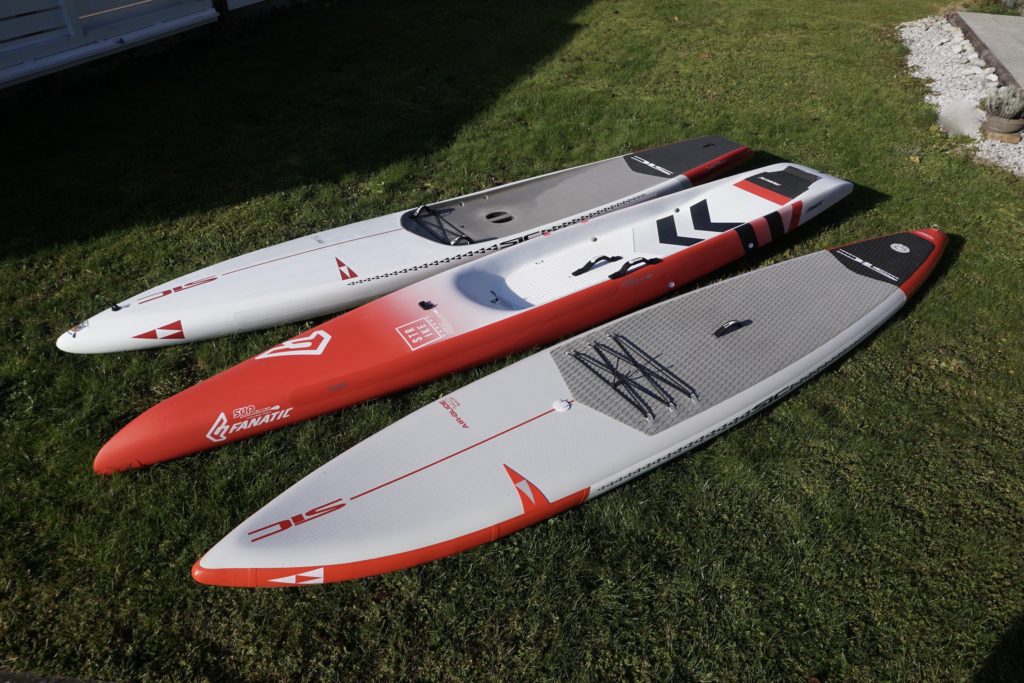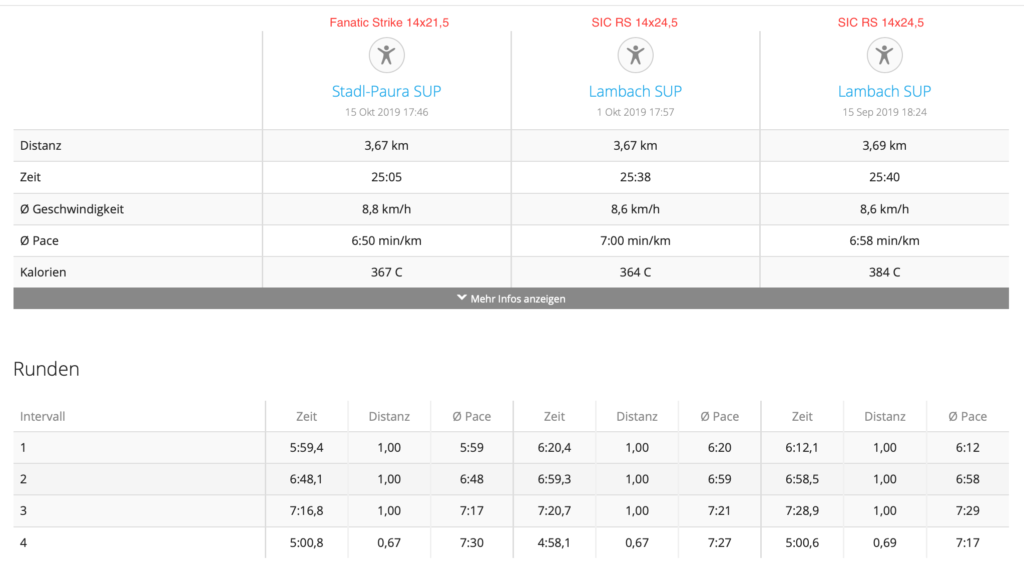3 Boards die in Sachen Fahrgefühl kaum unterschiedlicher ausfallen könnten, schreien fast danach bei weitgehend vergleichbaren Bedingungen verglichen zu werden.
Zahlen, Daten, Fakten… denn das Bauchgefühl liefert oftmals ein sehr trügerisches Bild, so absolvierte ich im Rahmen von 3 Runden je 4km 2 x 500m mit hoher Rennpace, bei minimaler Strömung und leichtem Gegenwind. Hohe Rennpace? Vermutlich habe ich diese Bezeichnung gerade selbst kreiert… nicht Vollgas aber im Pulsbereich 170 und mit erhöhtem Krafteinsatz, den ich maximal 1-2km halten könnte.
Die drei Kontrahenten, SIC RS 14×24,5 2019, Starboard Sprint 14×23,5 und LightCorp Signature 2.0 24,75″ habe ich auch genau in dieser Reihenfolge über meine Hausstrecke geprügelt.
Rahmenbedingungen
Es war ein echt heißer Tag, aber dass ich mal keine sichtbare Strömung und weitgehende Windstille auf meiner Hausstrecke vorfinde, kommt doch eher selten vor.
Meine derzeitige Form ist als sehr durchschnittlich zu bezeichnen und so kann man auch mal wieder getrost solche Vergleichstests machen, weil’s unterm Strich ja eh um nix geht.
Das Trainingspensum sollte höher ausfallen, dafür fehlt aber momentan sowohl Zeit, als auch die dafür benötigte Regenerationszeit.
Mit dem SIC RS wollte ich zuerst starten um möglichen Ermüdungserscheinungen beim gefühlt trägsten Board vorzubeugen, auch wenn die Streckenlängen ja durchaus überschaubar waren.
Gepaddelt wurde mit dem Braca Marlin 94sqi 2pc in 193cm Länge bei RS&Sprint, sowie 191cm beim Signature. Um auch Unterschiede durch die Wahl der Finne auszuschließen, verwendete ich jedesmal meine favorisierte VMG Mako 37.
Ich habe die Boards nach Ende der Runden auch noch OHNE Finne gewogen:
Starboard Sprint 14×23,5 (2021) inkl. RS Pro Jumbo : 13,26kg
SIC RS 14×24,5 (2019) inkl. Railsaver : 12,31kg
LightCorp Signature 2.0 14×24,75 inkl. RS Pro Jumbo: 10,67kg
2 x 500m Timetrial
SIC RS (2019)
Die ersten 500m bis zum Startpunkt meiner Aufzeichnungen nutzte ich jeweils um mich an die unterschiedlichen Fahreigenschaften anzupassen und ein paar Turns zu üben.
Das spazieren am Board klappt auf Anhieb wunderbar und der Geradeauslauf dieses Boards ist wirklich sensationell gut, ohne großartig in Sachen Fußsteuerung bewandert sein zu müssen.
Nach einem für meine Verhältnisse sehr sauber ausgeführten Step-Back-Turn fragt mich ein älterer Herr vom Ufer aus, ob ” des eh a, a aufblosboars Board is”… fragend sehe ich ihn an und hinterfrage seine “Vermutung” und er sagt mir “dass si des Ding ja durchbieagt wie olle anderen”… meine knapp 95kg und der für viele sicher tolerierbar Flex sollten dann aber auch reichen um das RS in dieser Sache zu verteidigen. Aber… wo er recht hat, hat er recht – das RS ist und bleibt einfach zu weich.
Nichtsdestotrotz läuft das Ding erstaunlich gut! Die ersten 500m nach Start bin ich gemütlich gepaddelt und war schon gespannt wie gut es mir damit gehen würde. Ohne großartig auf meine Fußstellung oder Paddeltechnik achten zu müssen, paddelte ich die ersten Timetrial 500m mit lediglich 6 Seitenwechsel in durchaus respektablen 2:53.
Beim zweiten Timetrial wurde das Paddel auf den letzten 200m doch sehr schwer und bei absoluter Flaute konnte ich eine Zeit von exakt 3min paddeln.
Gut/Schlecht? – keine Ahnung, dazu mussten erst die anderen Boards gepaddelt werden.
Starboard Sprint 14×23,5 (2021)
Etwas träger beim ersten Anpaddeln, aber dann schneidet man gefühlt deutlich effizienter durch’s Wasser verglichen mit dem RS. Der Geradeauslauf ist grundsätzlich ausgezeichnet, es sei denn man belastet mal eine Kante zu stark und macht dann schlagartig eine Kurve. Dieses Verhalten ist natürlich der spitz zulaufenden Nose geschuldet und kann je nach Präferenz auch als Vorteil gesehen werden. Wassereintritt über die Lenzlöcher findet übrigens erst bei größeren Neigungen statt, was wohl dem meiner Meinung nach sehr vorsichtig, hoch gehaltenem Standbereich geschuldet ist. Trotz gelegentlicher “Schlenkerer” musste ich nur 5x die Paddelseite wechseln und konnte den ersten Timetrial in 2:52 und den zweiten, trotz leichtem Gegenwind in 2:56 abschließen. Etwas mehr Konzentration als beim RS war schon vonnöten, aber der gefühlte Druck im Paddel war durchgängig sehr konstant, ohne dabei aber ein Gefühl von Leichtigkeit aufkommen zu lassen.
LightCorp Signature 2.0 14×24,75
Der Name ist Programm und so fühlt sich das Board schon auf den ersten Metern gänzlich anders an, als die zuvor gepaddelten Boards. Deutlich nervöser um die Mittellage, war mir die Einfahrzeit fast zu gering um die Paddeltechnik entsprechend anzupassen. So kann ich beim RS als auch beim Sprint mit mehr “Reach” paddeln ohne das Board aufzukanten. Ein guter Geradeauslauf ist deutlich schwieriger zu erreichen und im zweiten Abschnitt hatte ich gegen Ende mit spürbarem Gegenwind zu kämpfen. Gefühlt baut sich im Paddel deutlich weniger Druck auf und das Board beschleunigt nahezu mühelos auf Gleitgeschwindigkeit. Die ersten 500m konnte ich in 2:49 absolvieren bei den zweiten 500m hatte ich deutlich mehr zu kämpfen sauber zu bleiben und musste mich mit glatten 3Minuten zufrieden geben. Den deutlichsten Unterschied nimmt man aber beim gelassenen Paddeln mit gemäßigtem Puls wahr, hierbei erreiche beim Signature mühelos 8,2-8,4km/h, wofür beim RS und Sprint deutlich mehr Kraft notwendig ist. Ab dieser Geschwindigkeit kommt die Nose des Signatures aber stets weiter aus dem Wasser raus und ich muss aufpassen die Blade früh aus dem Wasser zu nehmen um eine Delfinschwimmbewegung des Boards zu unterbinden.
Schlussfolgerungen
Das Sprint war in diesem Vergleichstest das durch Kontinuität schnellste Board und auch meine bisherige Bestzeit auf der Hausrunde erzielte ich mit dem Starboard Sprint.
Mit dem LightCorp brauche ich noch ein paar Trainingskilometer, um auch auf längeren Distanzen das volle Speedpotenzial zu entfalten. Mit lediglich einer Sekunde Rückstand und den vergleichsweise schwierigsten Bedingungen aber quasi gleichauf mit dem “Testsieger”.
Mit lediglich 5-6sek pro km Rückstand, war das SIC RS unwesentlich langsamer und empfiehlt sich vor allem für Fahrer die gutmütige Fahreigenschaften über alles stellen.
Wie schon häufig erwähnt, macht mir das Signature einfach unglaublich viel Spaß und in Sachen Turns ist das Ding zwar echt herausfordernd, dreht aber deutlich besser als RS&Sprint. Woran liegt das? Zum einen muss ich nicht so weit nach hinten spazieren, zum anderen erzeugen die runden Rails keinen nennenswerten Widerstand bei flach gehaltenen Turns.
Vermutlich sollte ich bei aktuellem “Fahrkönnen” mit dem RS an den Start gehen, um sicher zu gehen, dass auch alle Kraft ideal umgesetzt werden kann. Dieses Board ist wirklich ein No-Brainer! Das Sprint ist das effizientere Board und ließ sich in diesem Test in Summe am kontinuierlichsten auf Geschwindigkeit halten. Das Signature fühlt sich im direkten Vergleich an, als ob man sich sich als Puck in einem Airhockey Feld bewegen würde. Ausreichend Trainingskilometer, ein gewisses Bewegungstalent und viel Zeit vorausgesetzt ist das Signature eine Rakete bei sämtlichen Bedingungen.
Wer allerdings als Raceeinsteiger möglichst einfach und schnell Erfolge sehen will, erreicht neue Bestmarken mit Kandidaten wie dem Starboard Sprint vermutlich wesentlich schneller. Besonders interessant wäre auch das Allstar gewesen… ein Prachtstück, dem ich mittlerweile doch etwas nachtrauere.
Im Rennen kommen noch viele andere Faktoren hinzu, wodurch ich mich momentan zumindest am Start eines Sprintrennens mit dem RS vermutlich am wohlsten fühlen würde. Das ist aber ein eigenes Thema, dem ich mich zeitnahe widmen werde 😉
Garmin Links
Randnotiz:
Ja… 100%ige Vergleichbarkeit gibt es leider nie und beim ersten Lauf mit dem RS war es noch weniger heiß und ich vermutlich auch noch eine Spur leistungsfähiger, als gerade beim letzten Lauf mit dem Signature. Spannend trotzdem zu erfahren, wie gering die Unterschiede auf kurze Distanzen ausfallen. Next Time: 200m Sprint Vergleichstest
